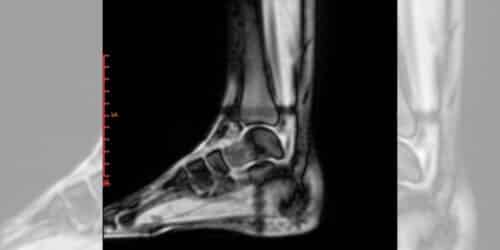Right, left, right, left, cut (watch out for the tree root, oh and don’t miss that boulder!), leap up, right, left, right…wobble; snap; collapse. Your eyes open and suddenly you are flat on your back staring at the morning dew dripping off the pine that stands strong and steady adjacent to you. Your head spins. Seconds feel like minutes; What happened, where am I? Then suddenly, the pain sets in. Your ankle, the pain. Seconds prior, your body created its own magical soundtrack to compliment the morning birds titled “Snap, Crackle, Pop”.
You look to your left. Aha! A loose rock. Damn that loose rock; They always get you. And just like that your heart shatters—is it broken? Is it just a sprain? Oh wait…I am fine because I am a superhuman immune to injuries. YES, that is it! Injuries do not impact me! I will stand up….I will run…How about 20 miles instead of 10? Okay right foot, left foot and just push up…OH is that pain? Oh the pain…. Walk a few steps, walk it off, deep breaths.
The sensation intensifies with every “shake off step” and suddenly you realize, that ultramarathon, that relay, that cross country race that you planned. Gone. Your friendships, your career that mandates physical activity. On hold. These things ladies and gentlemen are a reminder that we like everyone else are human. And we, like all other human beings, are fragile and our physicality can be taken in a moments time.

The problem then lies in the recovery. Injury is normal, especially when you are trying to be an unstoppable force tackling every trail challenge that you can find. Trail runners are an amazing species, but one that is prone to chronic injury and reinjury. Why? We are beautifully strong and driven creatures that have fought through so many obstacles in life including being told that we should not run alone in the woods or that we must not climb mountains because we will surely die. We have done these things, so why can we not override injury? If only it were as simple as that. Injury is in fact something that we cannot use our superhuman woman powers on to make it disappear and must instead practice patience, an ever challenging skill. Listening to your body and knowing the message of enough is enough.
Now to take off my trail runner hat and put on my physical therapist hat. How do we know when aches and pains are something that we can push through or game changers that will rob you of your running adventures? The answer is complex and probably a lot grayer than one might expect. The first thing to look at is what happened? Did you up your mileage and experience an onset of injury or did something powerful and acute happen like described above? The solution to the first may be simply to tone back to your previous level or allot a period of rest. The later will likely require assessment by a medical professional to rule out serious pathology and will then have a period of rest and immobilization to mitigate pain and swelling.
The number one goal after onset of injury is to minimize “the injury cycle” by catching it before it becomes a problem. Look at any possible routine changes: terrain, miles, shoes? Then find a cross training activity that will keep you stimulated while not pushing into pain—i.e. swimming, cycling, elliptical or simply allow your body a short period of complete rest to accelerate healing. Most importantly, listen. Listen to your symptoms at rest, while standing, while walking, on stairs, during every task. Avoid any symptom exacerbation in the early stages. At a tissue level, this causes havoc for the area of the body that is demanding attention. It leads to more and more inflammation and subsequently scarring that will turn that small, nagging injury into a chronic and debilitating injury.
So how do we know what we can push through safely and what requires some R&R? Here are some good self assessment tools to determine if you should push through or take rest:
-
When is your pain coming on?
- Do you feel it midway to late into your run and does it go away with completion of activity?
- You can continue to run pending that this pattern stays consistent
- Do you feel it immediately with activity (nagging in nature) and does it improve with a warm-up, but worsen with too much activity?
- This is consistent with a tendinopathy
- You can continue to run, but you should not push your intensity level until symptoms subside
- Do you feel it during your running immediately and does it get worse and worse as you push activity?
- REST until you have no symptoms with initiation of activity
- Do you feel it after activity with aggravation for several hours potentially into the next day?
- REST until you have no symptoms when doing daily activities
- Do you feel it midway to late into your run and does it go away with completion of activity?
-
How high is your pain level?
- Generally, pain 3-4/10 is the cap on the level of acceptable pain
- 0=no pain, 5=moderate to severe pain, 10=emergency room pain
- Generally, pain 3-4/10 is the cap on the level of acceptable pain
-
How do the symptoms that you experience when you are running impact you during the rest of your day?
- Are you limping around trying to accomplish your work activities or get things done around the house?
- You are pushing activity too much; Take 1-2 days of rest and reassess
- Are you limping around trying to accomplish your work activities or get things done around the house?
-
Are you limping while walking or early into your running?
- You cannot run if you cannot walk 2 miles without pain or a limp
80% of running injuries are secondary to overuse. You may feel strong and capable on your runs, but remember that your joints are probably lagging. The cardiovascular system develops faster than the bones and joints; You need to give them a break!
Also, be weary of signs of overtraining. The most common signs and symptoms of falling into this pattern of behavior are having a weakened immune system that causes you to constantly catch every office bug, as well as constant aches and pains during and in between runs. Those that are over-trained also commonly experience decreased appetite, increased sweating, decreased desire to train, higher resting heart rate, and irritability.

By varying your training and not pushing through early injury warning signs, you can continue to get out on the trails! Never under value recovery and listen to the plea for attention that your body sends you time to time. Also, remember that injury is short lived and just because you may not be able to run right now does not mean that that fearless trail runner is not still who you are. Get out and get after it just make sure you give that vessel of movement that carries you across far off lands some TLC here and there!
Happy trails!
Anna Wetzel, PT, DPT, OCS















